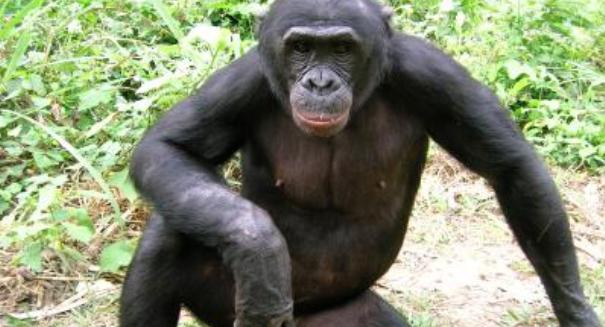
As little as 28 percent of the bonobo's range remains appropriate for one of mankind's closest living relatives.
According to a news release from the Wildlife Conservation Society, new research reveals that the bonobo is vulnerable to both human activity and forest loss. The research was conducted by a number of different groups, including the University of Georgia, University of Maryland and the Wildlife Conservation Society.
The study implicates both forest fragmentation and poaching for the loss of usable habitat. Utilizing information from nest counts and remote sensing imagery, the researchers discovered that the bonobo stays away from areas of high human activity and forest fragmentation. According to the researchers, as little as 28 percent of the bonobo’s range remains appropriate for one of mankind’s closest living relatives.
“The results of the study demonstrate that human activities reduce the amount of effective bonobo habitat and will help us identify where to propose future protected areas for this great ape,” noted lead author Dr. Jena R. Hickey of Cornell and UGA, in a statement.
“For bonobos to survive over the next 100 years or longer, it is extremely important that we understand the extent of their range, their distribution, and drivers of that distribution so that conservation actions can be targeted in the most effective way and achieve the desired results,” added Ashley Vosper of the Wildlife Conservation Society.
According to the news release, the entire range of the bonobo sits within the lowland forests of the Democratic Republic of Congo, an area currently rife with warfare and other issues.
The researchers developed a model utilizing available field data to define bonobo habitat and then interpolated to areas with a dearth of data. The team accumulated data on bonobo nest locations gathered between the years 2003-2010. This generated 2,364 “nest blocks.”
The researchers then tested several factors that took into consideration both ecological conditions and human impacts and generated a spatial model that determined and mapped the most significant environmental factors contributing to bonobo occurrence. They discovered that distance from agricultural area was the most critical predictor of bonobo existence. They also discovered that only 27.5 percent of that appropriate bonobo habitat is situated in currently protected areas.
The study’s findings are published in the journal Biodiversity and Conservation.
Do these findings concern you? Sound off in the comments section.
Leave a Reply